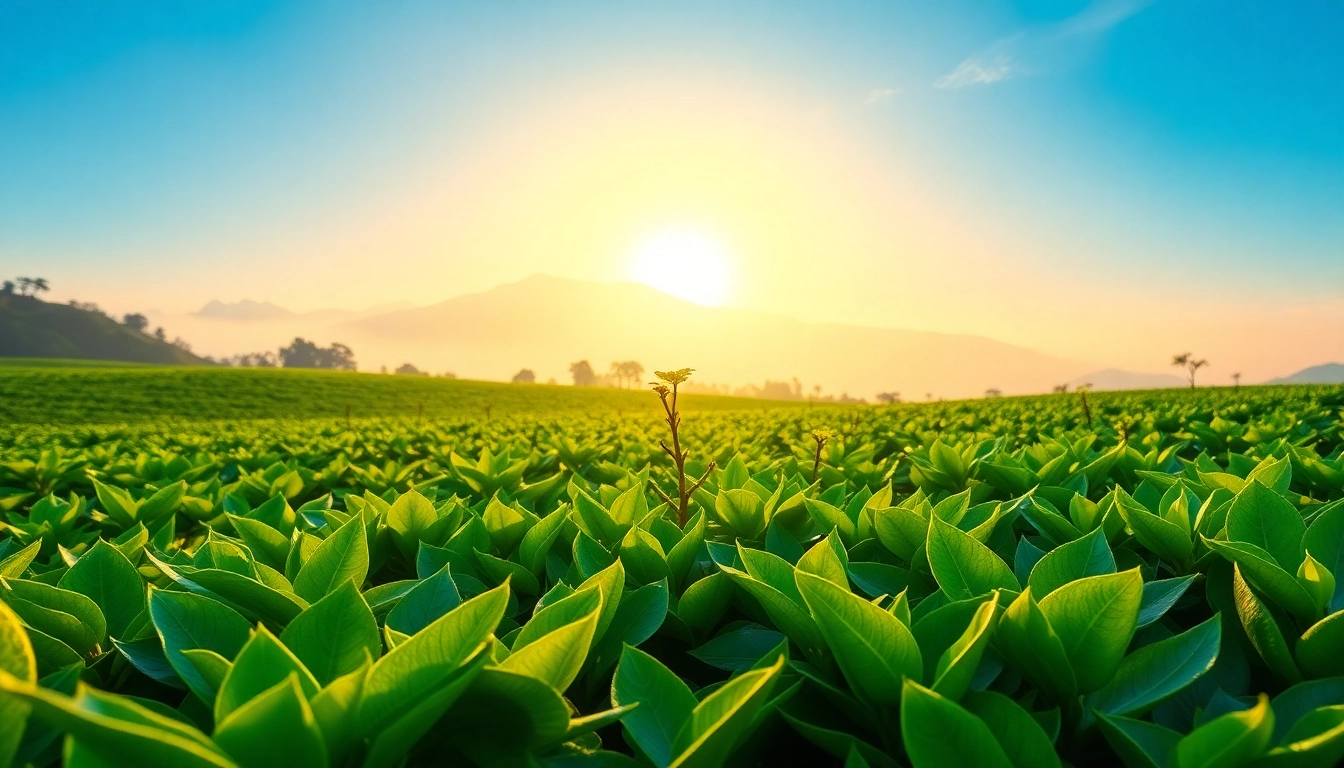Introduction to the Best Teas from Nepal
Nepal is renowned not just for its stunning landscapes and rich culture, but also for its exceptional teas. The country’s high elevation, favorable climate, and diverse geography contribute to the cultivation of some of the finest teas in the world. Among these, the best teas from Nepal have gained international acclaim for their unique flavors and high quality. In this comprehensive guide, we will explore the rich heritage, diversity, and health benefits of Nepali teas, as well as how to brew them perfectly at home.
The Rich Heritage of Nepali Tea
The story of tea in Nepal dates back many centuries, rooted deeply in the culture and traditions of the people. Tea was introduced to Nepal in the early 19th century, and over the years, it evolved into a vital component of the country’s agricultural economy. Not only does tea serve as a beverage, but it also plays a significant role in social interactions and ceremonial occasions.
The rich tapestry of Nepali tea culture is distinguished by its diverse practices among different ethnic groups. For instance, the Nepali chai, often made with milk and spices, is a common sight in households and tea shops across the nation. Traditional methods of tea cultivation and the expertise of local farmers ensure that each cup of Nepali tea tells a story of heritage, connection, and craftsmanship.
Why Nepal is a Unique Tea-Producing Region
Nepal’s geographical features contribute to its unique tea-growing abilities. The combination of altitude, varied microclimates, and rich soil allows for the production of various tea types, including black, green, and white teas. Estates such as Ilam and Kanchanjangha are particularly famous for their exceptional tea quality.
The influence of the Himalayan mountain ranges not only creates the perfect conditions for tea cultivation but also imparts distinctive flavor profiles. This uniqueness is further enhanced by the traditional organic farming methods practiced in the region, ensuring that the teas produced are not only tasty but also environmentally sustainable.
Connecting Nepal’s Environment to Tea Quality
The environmental factors in Nepal play a crucial role in the quality of the tea produced. High altitudes result in slower growth of tea plants, which allows for more complex flavor development. The cooler temperatures and monsoon rains also contribute to the plants’ rich nutrient absorption, leading to superior tea leaves.
Additionally, unlike many large-scale tea producers, Nepali tea farms often practice sustainable farming techniques, avoiding harmful pesticides and fertilizers. This dedication to organic farming practices not only preserves the land but also enhances the natural flavors and health benefits of the teas.
The Diverse Varieties of Nepali Teas
Nepal offers a broad range of teas that cater to different tastes and preferences. From robust black teas to delicate green teas, the diversity in flavor and aroma resembles the cultural richness of the country.
Black Teas: Bold Flavors with a Rich Finish
Black tea is the most popular type of tea consumed in Nepal. Renowned for its bold flavors and rich aroma, Nepali black tea often rivals famous varieties from Darjeeling, India. The teas are often characterized by their deep color and full-bodied flavor, making them ideal for morning consumption.
Some of the most notable black teas include:
- Himalayan Golden Black Tea: Known for its golden-tipped leaves and smooth finish, it has garnered international acclaim.
- Nepali Breakfast Tea: A robust blend perfect for starting the day, this tea offers a malty fragrance with a hint of sweetness.
- Kanchanjangha Black Tea: Grown in a prime location at the foothills of the Himalayan range, it possesses a musky flavor profile that delights tea lovers.
Green Teas: Freshness and Aroma
Green tea in Nepal is renowned for its refreshing delicacy and vibrant aroma. This category of tea is less oxidized and retains more of its natural properties than black tea. Green teas from Nepal are often described as fresh, floral, and sometimes even slightly vegetal, offering a lighter option for tea drinkers.
Notable varieties include:
- Nepali Green Tea: This tea has a sweet, citrus aroma and can provide a pleasant, smooth flavor with toasted notes.
- Jun Chiyabari Green Tea: Sourced from one of the most acclaimed estates, this tea is noted for its vibrant green color and nuanced flavors.
Herbal and Specialty Teas: Unique Blends
In addition to traditional black and green teas, Nepal produces a variety of herbal and specialty teas that reflect the region’s rich biodiversity. Many of these blends incorporate local herbs and spices, offering unique tastes and health benefits.
Some popular herbal teas include:
- Turmeric Tea: Known for its anti-inflammatory properties, this tea combines local turmeric root with black pepper for enhanced flavor.
- Dandelion Tea: Often enjoyed for its detoxifying effects, this tea is made from freshly harvested dandelion leaves and roots.
Health Benefits of the Best Teas from Nepal
Exploring the health benefits of Nepali teas reveals why they deserve a place in every tea lover’s pantry. These teas are not just about taste; they carry numerous wellness properties that contribute to overall health.
Antioxidants and Wellness
Many of the best teas from Nepal are rich in antioxidants, which are essential for fighting free radicals in the body. For instance, green teas are known for their high content of catechins, a type of antioxidant that can help reduce inflammation and improve heart health.
Black teas, while also providing antioxidants, have been shown to support digestive health and reduce anxiety. Studies suggest that regular consumption of black tea can lead to improved gut health due to its antibacterial properties.
Exploring Flavor Profiles and Health Gains
The diverse flavor profiles present in Nepali teas come with various health benefits. Each type of tea can offer a different set of wellness advantages. For instance:
- Black Tea: Boosts mental alertness and reduces stress.
- Green Tea: Aids in weight management and enhances metabolism.
- Herbal Teas: Provide targeted health benefits, such as improved digestion and enhanced immunity.
Pairing Nepali Teas with Food
Pairing tea with food can elevate the dining experience. Nepali teas, with their variety of flavors, can complement many dishes:
- Black tea pairs well with hearty meals such as meat stews and rich desserts.
- Green tea’s refreshing nature makes it suitable for light salads and seafood dishes.
- Herbal teas can be enjoyed with spicy foods, helping to mitigate their intensity.
How to Brew the Perfect Cup of Nepali Tea
Brewed correctly, each cup of Nepali tea can provide a delightful experience. Here are some essential tips for making the perfect brew.
Choosing the Right Water and Temperature
Quality water is crucial for brewing tea. Use filtered or spring water for the best taste. The temperature at which you brew your tea will depend on the type:
- Black Teas: 90-100°C (194-212°F)
- Green Teas: 70-80°C (158-176°F)
- Herbal Teas: 90-100°C (194-212°F)
Steeping Times for Optimal Flavor
The length of time you steep your tea is also critical. Generally, these are the recommended steeping times:
- Black Teas: 3-5 minutes
- Green Teas: 2-3 minutes
- Herbal Teas: 5-7 minutes
Traditional Nepali Tea-Drinking Practices
Drinking tea in Nepal is often a social ritual. It is commonly enjoyed in family gatherings or during breaks at work. Traditional nepali afternoons might include the serving of chai alongside snacks such as samosas or pakoras, fostering community and conversation.
Understanding these practices not only enhances your experience but also connects you to the cultural roots of the tea.
Where to Buy the Best Teas from Nepal
If you are keen on trying the best teas from Nepal, knowing where to purchase them is crucial. Here are some of the top sources.
Top Online Retailers for Authentic Nepali Teas
Several online retailers specialize in selling authentic Nepali teas, ensuring that you receive high-quality products. Some recommended platforms include:
- Nepali Tea Traders: Offers a diverse selection of organic teas.
- Young Mountain Tea: Known for its direct trade and sustainable practices.
- Nepal Tea Collective: Focuses on helping small farmers sell their tea internationally.
Cultural Markets and Local Sources
If you have the opportunity to visit Nepal, local markets are excellent places to discover the rich variety of teas available. Cities like Kathmandu and Pokhara offer numerous tea shops where you can taste and purchase different kinds of tea right from the source.
Supporting Ethical Tea Practices and Farmers
When purchasing Nepali tea, consider supporting companies that emphasize ethical practices. Many tea producers in Nepal are involved in fair trade and cooperative models, ensuring that farmers receive fair compensation for their labor. This support not only contributes to local economies but also preserves the traditional methods of tea farming.
Conclusion
Nepal’s landscape and culture create a unique environment for tea cultivation, resulting in some of the best teas in the world. From its rich heritage to the diverse varieties and numerous health benefits, Nepali teas provide a sensory journey worth exploring. By considering ethical sourcing and understanding how to brew your tea, you can enjoy an authentic taste of Nepal in every cup. Whether you prefer a robust black tea, a refreshing green tea, or a soothing herbal brew, there is a Nepali tea waiting to delight your palate.



